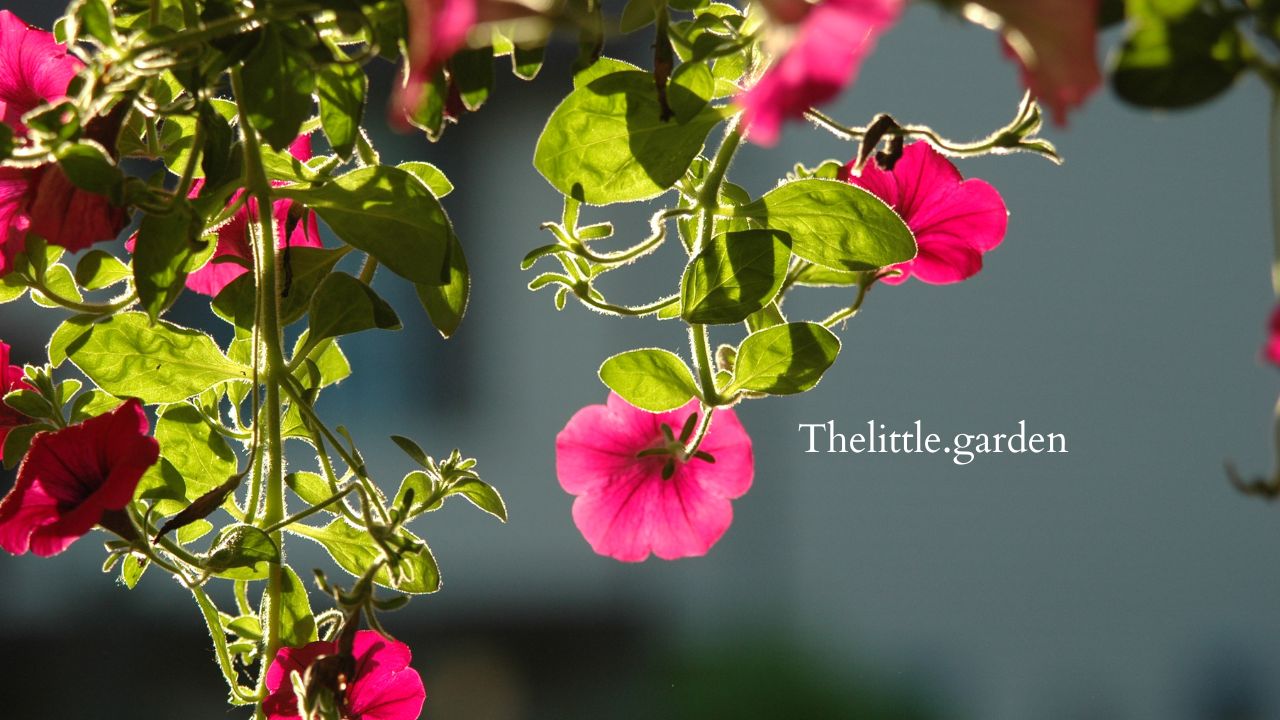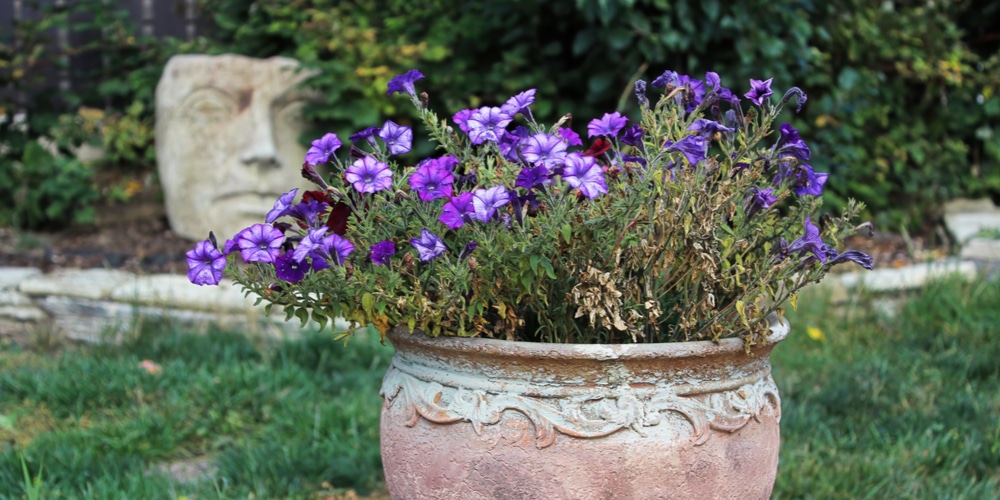Why Are My Petunias Turning Yellow – Petunias are renowned for their vibrant colors and delightful blooms, making them a favorite among gardeners. However, seeing your petunias turning yellow can be disheartening and often raises concerns about their health. Yellowing leaves can indicate a range of issues, from nutrient deficiencies to environmental stresses. In this blog post, we’ll explore the various reasons why your petunias might be turning yellow, how to identify the underlying problems, and what you can do to restore your plants to their full glory. 🌼
Understanding Petunia Plant Health

Before diving into the reasons behind yellowing petunias, it’s essential to understand what these plants need to thrive. Petunias are relatively low-maintenance annuals, but they require proper care to flourish. Below is a brief overview of the ideal conditions for growing healthy petunias:
| Growth Factor | Ideal Conditions |
|---|---|
| Soil | Well-draining, fertile soil with a pH of 6.0 to 7.0 |
| Sunlight | Full sun, at least 6 hours a day |
| Water | Moderate, consistent watering; avoid soggy soil |
| Nutrients | Fertilize every 4-6 weeks during the growing season |
| Pests & Diseases | Regular monitoring and prompt treatment are necessary |
Common Causes of Yellowing Petunias
Nutrient Deficiencies

Nutrient deficiencies are one of the leading causes of yellowing leaves in petunias. Here are the main nutrients that may be lacking:
- Nitrogen: Essential for leaf growth, a nitrogen deficiency can cause older leaves to turn yellow while new leaves remain green.
- Iron: An iron deficiency leads to interveinal chlorosis, where the leaf veins remain green, but the surrounding tissue turns yellow.
- Magnesium: A magnesium deficiency often presents as yellowing between leaf veins, especially in older leaves.
Important Note: Always perform a soil test before adding fertilizers to determine which nutrients are truly lacking. Over-fertilization can also harm your plants.
Watering Issues
Both overwatering and underwatering can cause petunias to yellow:
- Overwatering: Petunias prefer well-drained soil. If they sit in waterlogged conditions, roots can rot, leading to yellowing leaves.
- Underwatering: On the other hand, petunias need consistent moisture. If they don’t receive enough water, they may wilt and their leaves may turn yellow.
Sunlight Exposure
Petunias thrive in full sun, but excessive heat can stress the plants:
- Insufficient Light: If your petunias aren’t receiving enough sunlight, they may become leggy and develop yellow leaves.
- Heat Stress: High temperatures can cause the leaves to yellow and drop. Providing some afternoon shade can help.
Pest Infestations
Pests can also be a significant factor in your petunias’ decline:
- Aphids: These small pests suck sap from the leaves, leading to yellowing and wilting.
- Spider Mites: Often found on the undersides of leaves, spider mites can cause leaf discoloration and stippling.
- Whiteflies: Similar to aphids, whiteflies can also contribute to yellowing by feeding on plant sap.
Important Note: Regularly inspect your plants and take immediate action if you spot pests. Use insecticidal soap or neem oil as effective treatments.
Diseases and Fungal Issues
Diseases can also lead to yellowing leaves in petunias:
- Powdery Mildew: This fungal disease can cause leaves to yellow and develop a white powdery coating.
- Root Rot: Caused by overwatering, root rot can prevent roots from absorbing nutrients, leading to yellowing leaves.
Diagnosing the Problem
To effectively address the issue of yellowing petunias, diagnosis is key. Here are steps you can take:
- Inspect the Soil: Check if the soil is soggy or too dry. Adjust your watering schedule accordingly.
- Look for Pests: Examine the leaves for signs of aphids, spider mites, or other pests.
- Monitor Light Conditions: Ensure your petunias are getting at least 6 hours of direct sunlight each day.
- Check Nutrient Levels: Conduct a soil test to determine if nutrient deficiencies exist.
Solutions for Yellowing Petunias: Why Are My Petunias Turning Yellow
Fertilizing Correctly
Once you’ve identified a nutrient deficiency, the next step is to choose the right fertilizer. Here are some options:
- Balanced Fertilizers: Use a balanced fertilizer that contains nitrogen, phosphorus, and potassium.
- Liquid Fertilizers: Applying liquid fertilizers can provide an instant nutrient boost.
- Organic Options: Consider organic fertilizers like compost or fish emulsion for slow-release nutrients.
Adjusting Watering Practices, Why Are My Petunias Turning Yellow
Improving your watering routine can have immediate effects on your petunias:
- Ensure Proper Drainage: Use pots or garden beds with good drainage to prevent waterlogging.
- Water Deeply but Infrequently: Water thoroughly, allowing the soil to dry out slightly between watering sessions.
Managing Sunlight Exposure
To optimize light conditions for your petunias:
- Relocate Shaded Plants: If possible, move pots to sunnier locations or trim back nearby plants that may be blocking sunlight.
- Provide Shade During Heatwaves: Use shade cloth or other materials to protect petunias from extreme heat.
Pest Control
Implement the following strategies to manage pest infestations:
- Natural Predators: Encourage beneficial insects like ladybugs and lacewings, which feed on pests.
- Regular Spraying: Use insecticidal soap or neem oil to control outbreaks, applying every 5-7 days as needed.
Treatment for Diseases
For treating fungal diseases and other infections:
- Remove Affected Leaves: Prune away any yellowed or diseased leaves to prevent the spread of infection.
- Apply Fungal Treatments: Use fungicides as necessary, following the manufacturer’s instructions.
Preventing Future Yellowing
To keep your petunias healthy and vibrant, consider these preventive measures:
- Regular Monitoring: Keep a close eye on your plants for early signs of stress, pests, or disease.
- Rotation and Diversity: Practice crop rotation and diversify your garden to avoid soil-borne pests and diseases.
- Proper Seasonal Care: In winter, protect your plants from extreme cold and during hot months, provide adequate watering.
By understanding the underlying causes of yellowing in petunias and implementing the right solutions, you can ensure your plants remain healthy and beautiful. Regular care and attention to their specific needs will help you enjoy vibrant blooms throughout the growing season. 🌷
